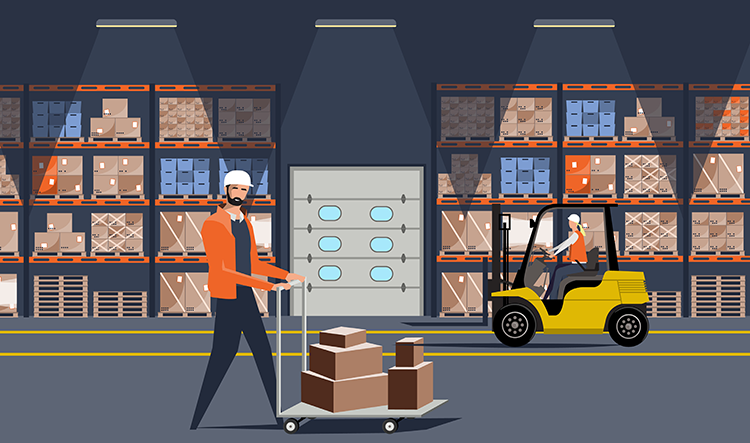Poland’s warehouse market shows diverging trends across big five regions
At the start of 2025, Poland’s warehouse market is reflecting both resilience and shifting dynamics across its five largest regions, as reported by Avison Young.
In Warsaw, the warehouse sector continues to perform strongly, supported by proximity to a large consumer base, extensive transport networks, and rising demand for last-mile logistics services. Growth is evident both within city limits, where quick deliveries and workforce access are essential, and in suburban areas offering larger space and flexibility for production and distribution. Despite economic challenges, tenant activity remains stable, although the market faces signs of overdevelopment, particularly with larger facilities delivered in 2023 and 2024 still awaiting tenants. While rental rates in central Warsaw are the highest in Poland, developers are increasingly willing to negotiate, offering longer rent-free periods and flexible leasing terms. Meanwhile, there is notable demand for smaller warehouse units of up to 1,500 sqm, driven largely by direct-to-consumer businesses in cosmetics, consumer electronics, and apparel. Landlords have responded to market pressures by introducing creative incentives, including extended service charge waivers and compensation guarantees for construction delays. Locations with good public transport connections, especially suburban rail, trams, and cycle routes, are becoming more important for tenants evaluating new sites. The sublease market is gaining momentum, with logistics firms and third-party operators seeking short-term solutions to manage seasonal or demand-driven risks. Sustainability considerations are also increasingly influencing leasing decisions, with many tenants requesting installations such as photovoltaic panels as part of lease agreements.
Upper Silesia remains distinct from other regions by attracting significant activity from manufacturing firms, particularly those in the automotive, home appliance, heavy industry, and chemical sectors. Warehousing here often directly supports production through just-in-time systems and custom-built facilities. Despite facing rising vacancy rates and cautious tenant sentiment, Upper Silesia maintains its attractiveness due to strategic location, strong infrastructure, and a diverse range of industrial properties. The region is becoming increasingly important for automotive and component manufacturers relocating from neighbouring countries, drawn by its industrial ecosystem and position within Central Europe. Energy supply has emerged as a critical factor, with investors securing power capacity in advance to support future operational needs. However, there are challenges, including limited availability of larger plots of land, particularly around Katowice and Gliwice, which restricts the potential for extensive build-to-suit developments.
In Wrocław, a high concentration of manufacturing activity underpins the demand for both production and logistics space. Alongside Upper Silesia and Poznań, Wrocław ranks as one of the leading regions for industrial investment. The area benefits from its role as an academic centre supplying skilled labour for sectors such as logistics, automation, and IT. Wrocław is also a national leader in intermodal logistics, with key terminals located in Kąty Wrocławskie, Legnica, and Brzeg Dolny, making it attractive for companies in the automotive and chemical industries seeking combined road and rail transport solutions. However, grid connection capacity has become a significant constraint, particularly for projects requiring high power levels, with wait times for connections stretching to over a year and a half. Workarounds, including shared energy capacity and reliance on surplus energy from neighbouring sites, are emerging to address this challenge. Meanwhile, Lower Silesia is gaining strategic significance as a hub in the European battery supply chain, drawing interest from South Korean firms linked to major manufacturers like LG and SK Innovation. Wrocław and its surrounding area are increasingly viewed as central to the continent’s electromobility sector.
Central Poland continues to be one of the country’s most important logistics regions, benefiting from its central location and direct connections to major transport routes. Despite entering a phase of market saturation following significant growth between 2021 and 2023, particularly in areas like Stryków and Rawa Mazowiecka, the region retains strong investor interest. Vacancy rates have increased, but demand remains driven by the region’s strategic position. A notable trend in Central Poland is the emergence of “warehouse as a service” models, where tenants pay for specific logistics services instead of traditional leases. There is also rising investment in light manufacturing, with relocations from Western Europe fueling demand for both ready-to-occupy facilities and tailored build-to-suit projects. Sectors such as lighting, HVAC, and electronics are particularly active.
In Poznań, the beginning of 2025 has brought signs of moderate recovery, tempered by developers’ cautious approach and evidence of market saturation. The vacancy rate has edged above 8%, consistent with trends seen in other regions. Although rental rates have remained relatively steady, developers are offering more competitive incentives and flexible lease terms to secure tenants. The region continues to attract small and medium-sized manufacturers from Western Europe, drawn by lower operational costs and strategic logistics advantages. These firms are increasingly looking beyond the A2 motorway corridor for more affordable and available sites. During early 2025, approximately 60,000 sqm of modern warehouse space was delivered in the region, accounting for around 10 percent of new national supply. However, new construction activity has slowed, with developers closely monitoring demand and vacancy levels before committing to further projects.
Across all five regions, Poland’s warehouse market shows a mix of resilience and caution. While tenant demand remains present, developers and investors are navigating an environment marked by shifting needs, supply imbalances in some segments, and growing emphasis on sustainability and operational efficiency.









